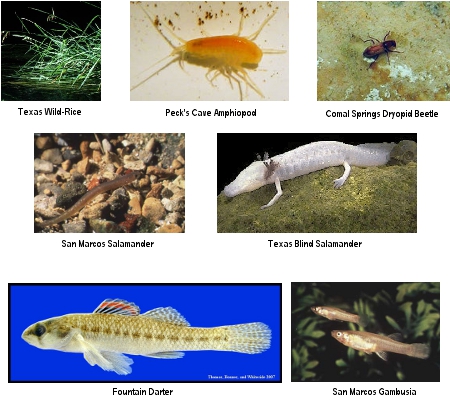Texas May Have to Evacuate — Its Animals

|
|
Because of the state's second-worst drought in history, several endangered species living in Texas' two largest springs may have to be evacuated to a Sn Marcos hatchery.
|
In the face of yet another environmental disaster, officials are preparing to call for evacuations. And unlike with Hurricane Irene, the evacuees really have no choice in the matter: They are seven endangered species suffering the choking dryness of the second-worst drought in Texas history.
While it’s not an acute disaster like Hurricane Irene, the Texas drought is slowly choking the wildlife population, especially in south-central Texas where rainfall since the drought began in October 2010 is 16 to 20 inches below normal. The record heat and lack of water have forced many cattle ranchers to sell off their entire herds this year, and agriculture isn’t faring much better. State agriculture economists estimate that the drought has caused $5.2 billion in agriculture losses, equal to 27.7 percent of the average value of agricultural production over the last four years—the most in state history.
And so it’s no wonder that a pack of species already struggling to survive is not faring the drought too well as the two springs that contain their only remaining populations begin to dry up. In addition to the searing sun, the springs’ waters face depletion from nearby cities and towns, effectively putting these endangered species in direct competition with humans for the water left in those two springs, the Comal and the San Marcos.
The largest in the state, the springs have already dropped about 50 percent of their flow. If they drop another 50 percent from their current levels – that is, a 75 percent decrease from their usual levels – U.S. Fish and Wildlife services will initiate an evacuation, whisking away large samples of the populations to a San Marcos hatchery to preserve the species until rains return.
The species preparing for evacuation are: the fountain darter, the San Marcos gambusia, the Texas blind salamander, the San Marcos salamander, the Comal Springs Riffle beetle, the Comal Springs Dryopid beetle, the Peck's cave amphipod and Texas wild-rice.
Posted by Laura Williams on Aug 31, 2011